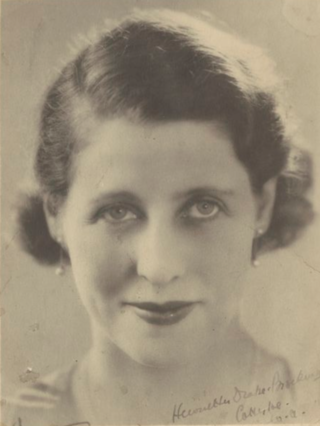
Batavia ( ) was a ship of the Dutch East India Company (VOC). She was built in Amsterdam in 1628 as the flagship of one of the three annual fleets of company ships and sailed that year on her maiden voyage for Batavia, capital of the Dutch East Indies. On 4 June 1629, Batavia was wrecked on the Houtman Abrolhos, a chain of small islands off the western coast of Australia.
Francisco Pelsaert was a Dutch merchant who worked for the Dutch East India Company best known for his role as the commander of the Batavia. The ship ran aground in the Houtman Abrolhos, off the coastal regions of Western Australia in June 1629, which led to a massacre of survivors orchestrated by Jeronimus Cornelisz.
Jeronimus Cornelisz was a Dutch apothecary and Dutch East India Company merchant who sailed aboard the merchant ship Batavia which foundered near the Australian mainland. Cornelisz then led one of the bloodiest mutinies in history.

The Zaandam, or Sardam, Saerdam and Saardam, was a 17th-century yacht of the Dutch East India Company. It was a small merchant vessel designed primarily for the inter-island trade in the East Indies.

Strange Objects is a 1990 novel by Australian author Gary Crew.

A castaway is a person who is cast adrift or ashore. While the situation usually happens after a shipwreck, some people voluntarily stay behind on a desert island, either to evade captors or the world in general. A person may also be left ashore as punishment (marooned).

Dutch Australians refers to Australians of Dutch ancestry. They form one of the largest groups of the Dutch diaspora outside Europe. At the 2021 census, 381,946 people nominated Dutch ancestry, representing 1.5% of the Australian population. At the 2021 census, there were 66,481 Australian residents who were born in the Netherlands.
Willem Siebenhaar was a social activist and writer in Western Australia from the 1890s until he left Australia in 1924. His literary contributions and opposition to policies such as conscription were his most notable contributions to the history of the state.

The Wallabi Group is the northernmost group of islands in the Houtman Abrolhos off the western coast of Western Australia. it is 58 kilometres from the Australian mainland, and about 9 kilometres from the Easter Group.
Batavia Road is an anchorage, or roadstead, in the Pelsaert Group of the Houtman Abrolhos, off the coast of Western Australia. It is located at 28°58′S113°58′E, on the eastern side of Pelsaert Island, near its southern end. It was discovered and named in April 1840 by John Clements Wickham, captain of HMS Beagle. Wickham's assistant John Lort Stokes later wrote:
"On the south west point of the island the beams of a large vessel were discovered, and as the crew of the Zeewyk, lost in 1728 [sic], reported having seen the wreck of a ship on this part, there is little doubt that the remains were those of the Batavia, Commodore Pelsart, lost in 1627. We in consequence named our temporary anchorage Batavia Road, and the whole group Pelsart Group."

Wiebbe Hayes was a Dutch soldier known for his leading role in the suppression of Jeronimus Cornelisz's massacre of shipwreck survivors in 1629, after the merchant ship Batavia was wrecked in the Houtman Abrolhos, a chain of coral islands off the west coast of Australia.

The Abrolhos tragedy is the only English translation of Isaac Commelin's 1647 Ongeluckige voyagie, van't schip Batavia, which was the first published account of the 1629 shipwreck of Batavia in the Houtman Abrolhos, and the subsequent mutiny and massacre that occurred amongst the survivors.

Florance Constantine Broadhurst (1861–1909) was a 19th-century Western Australian businessman who is most notable for successfully taking over the management of a number of business ventures of his ill-fortuned, yet extremely creative and hard-working father, Charles Edward Broadhurst, and turning a profit. The best known of these is the guano mining venture in the Houtman Abrolhos. While his entrepreneur father had recognised the potential of the industry and began mining, eventually to obtain a monopoly on the extraction of the guano, he proved unsuccessful in managing the concern. This situation continued until Florance, who had a mercantile education, joined the concern and began managing the venture under the name Broadhurst MacNeil and Company. MacNeil was initially a backer and a partner, but he took no part in the management of the venture. With his accountancy training F.C. Broadhurst proved enormously successful exporting to Europe and winning a gold medal at the Paris Exposition.
Hutt River is a river in the Mid West region of Western Australia.

Henrietta Drake-Brockman was an Australian journalist and novelist.
Lucretia Jans, or Lucretia van der Mijlen, was a survivor of the events that followed the sinking of the Batavia in 1629.

Rupert Gerritsen was an Australian historian and a noted authority on Indigenous Australian prehistory. Coupled with his work on early Australian cartography, he played an influential part in re-charting Australian history prior to its settlement by the British in 1788, and noted evidence of agriculture and settlements on the continent before the arrival of settlers.

Max Cramer OAM was an Australian scuba diver who became famous as the co-discoverer of the wreck of the Batavia on 4 June 1963. He was involved in a number of maritime archaeology projects pertaining to historic shipwrecks in Western Australia.

Pelsaert Island is one of the islands of the Pelsaert Group, which is the southernmost of the three groups of islands that make up the Houtman Abrolhos island chain in Western Australia.

Beacon Island, also known as Batavia's Graveyard, is an island on the eastern side of the Wallabi Group at the northern end of the Houtman Abrolhos, in the Indian Ocean, off the coast of Western Australia.














